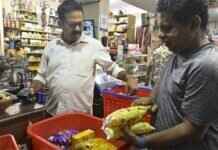Amid a rise in the number of Below Poverty Line (BPL) and Antyodaya Anna Yojana (AAY) card holders in Haryana, a staggering 6.84 lakh families have come under scrutiny for allegedly providing false income details in the Parivar Pehchan Patra (PPP) to gain access to benefits intended for the impoverished. This unique family ID system, introduced in 2019, was set up to streamline the delivery of government schemes and services through a paperless and faceless approach. The government utilized special software, inputs from the Crime Investigation Department, and data from fair price shops to identify these families, with Sirsa and Hisar districts topping the list.
Government Crackdown
Recently, stern text messages were dispatched to these families, urging them to rectify their income details in the PPP by April 20 or face potential consequences. The State government’s strong warning emphasized the importance of maintaining accurate and honest information in the PPP to prevent legal repercussions. Families who provided inaccurate income details or created multiple family IDs at the same address have been granted a grace period to correct their information before facing punitive action.
Satish Khola, the State coordinator of the Haryana PPP Authority, emphasized the government’s commitment to ensuring the accuracy of the PPP with the cooperation of citizens. Offering families a chance to rectify their income details and merge multiple family IDs, the government aims to uphold transparency and accountability. With over 76 lakh PPPs in circulation covering nearly 3 crore members, and over 51 lakh families holding BPL and AAY ration cards, the initiative seeks to address discrepancies and discrepancies in the system.
Political Controversy
During the Budget Session, Congress’s Rohtak MLA Bharat Bhushan Batra raised concerns about the BJP government’s issuance of a large number of BPL and AAY ration cards without proper verification. He alleged that the government’s reliance on self-verification of income by PPP holders led to the issuance of cards without the required physical verification specified in the PPP Act. The significant spike in the number of BPL and AAY cards between 2022 and 2024 and the issuance of new AAY cards raised questions about the verification process and its impact on the distribution of benefits.
The State government’s decision to increase the maximum income limit for BPL families and issue PPPs to migrant families under the ‘One nation one ration card’ scheme has contributed to the growing number of beneficiaries. While efforts were made to remove ineligible families from the PDS system and include deserving households, discrepancies in income details and verification processes have raised concerns about the accuracy of the data.
As we delve deeper into the complexities and challenges of identifying eligible beneficiaries and ensuring the integrity of welfare schemes, the need for transparency and accountability becomes increasingly crucial. The ongoing investigation into false income details underscores the government’s commitment to fair and equitable distribution of benefits to those in need. By addressing discrepancies and enhancing verification processes, authorities strive to build a more transparent and inclusive system that truly serves the vulnerable segments of society.














